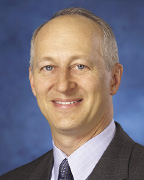National Perspective
The first word in any discussion of retail is "consumer." The U.S. housing recovery has restored consumer confidence across much of the country. Thus, retail vacancy is trending downwards, and healthy retailers are aggressively looking to expand and penetrate new markets. This makes for a landlord-friendly environment; supply remains constrained from the limited amount of new development.
There is a differentiation between mid-market retailers (GAP) and the other bookends of merchandise: luxury retailers (Tiffany) and discount stores (Costco). Retailers on the lower end of the pricing spectrum have, naturally, thrived throughout the recession. Luxury brands and higher-end restaurants were impacted less and rebounded more quickly. However, mid-priced retailers remain challenged.
There is a notable market bifurcation on the basis of class property quality. Class A properties continue to thrive while C properties are still struggling and often need to be re-purposed. B properties remain a big question: invest value-add capital to create an A asset or, if ignored, will it become a class C?
New York City = A Different Animal
Select destination cities have enjoyed above-average retail appreciation, driven by high demand from international flight capital, suburban to urban population flows, and limited availability. High-street retail in infill, urban markets is extremely strong today and NYC is at the forefront of this trend.
Off-shore investors and expanding retailers alike consider NYC to be the most secure place to direct their money. Global merchants who want to penetrate the US market must have a meaningful presence in NYC. Several Manhattan retail districts are among the priciest in the world; to justify these retail rents, tenants allocate a portion of their rent to promotion and marketing. On Fifth Ave. in the mid 50's, store rents can exceed $10,000 per s/f.
More Capital than Product leads to Cap Rate Compression
Core investors seek the most risk-free assets: a class A suburban shopping center located on a premium corner with great demographics, or densely populated urban location with high trade area incomes.
International economic and political uncertainty has drawn huge sums of off-shore equity to our country. In combination with an oversupply of domestic institutional capital, this has created a pricing bubble for the best retail assets in top tier U.S. markets. The imbalance of investable dollars and available product has compressed cap rates. Additionally, historically low interest rates have enabled the return of aggressively priced sales
With the exception of the buyers and long-term owners of the best properties in the best locations, many investors are concerned about purchasing an asset at a sub-5% cap rate as interest rates will inevitably rise. This may be the year where capital - on both the debt and equity side - will need to migrate to secondary markets.
Look outside of NYC; Consider Secondary/Tertiary Markets, be Visionary to get Higher Yields
Within secondary markets, there are excellent locations and well-positioned real estate that represents opportunities for enhanced yields. For example, strong grocery anchored centers with 85%+ occupancy are well-suited for institutional capital to team with a local entrepreneur to generate value-added returns.
Additionally, well-located assets with credit tenants and solid demographics can benefit from the strategic engineering of the capital stack to drive value. Other tactics include selling off or building on an outparcel to increase NOI, and reconfiguring in-line space to add or replace a junior anchor.
Tenants' formats are constantly evolving, in appearance, layout and size. For owners, "right-sizing," presents challenges, but also opportunities. For example, down-sizing a junior anchor can create available space for smaller tenants that pay higher rents. Owners can aggregate and convert un-needed, un-leasable shop space to more efficient space, and replace faltering anchors with traffic-generating alternative uses such as medical, DMV, gyms, library, etc.
Owners may choose to invest to buy out below market tenants, or patient money can absorb a few years of lower returns and enjoy the rewards when those leases expire.
The Lending Environment
The capital markets tremors of 2008-09 have left many lenders and buyers nervous about U.S. consumer habits and wary of retail, but increasing demand from tenants is drawing capital providers back in to the game. For a truly prime property on "main-and-main" in Manhattan, there may be as many lenders competing to make loans as there were at the top of the market in 2007.
In addition to banks and life companies, the CMBS factory has roared back to life, and owners of B and C class properties in secondary markets are eagerly lining up at this "ATM machine." The underwriting is less focused on a Sponsor's experience and activity in the subject market. However, many borrowers that struggled working out prior securitized loans see CMBS 2.0 as the evil twin brother of the first act: when assets sour, there is limited borrower flexibility.
David Robinov is managing director, investment sales at Ackman-Ziff Real Estate Group, New York, N.Y.
Tags:









